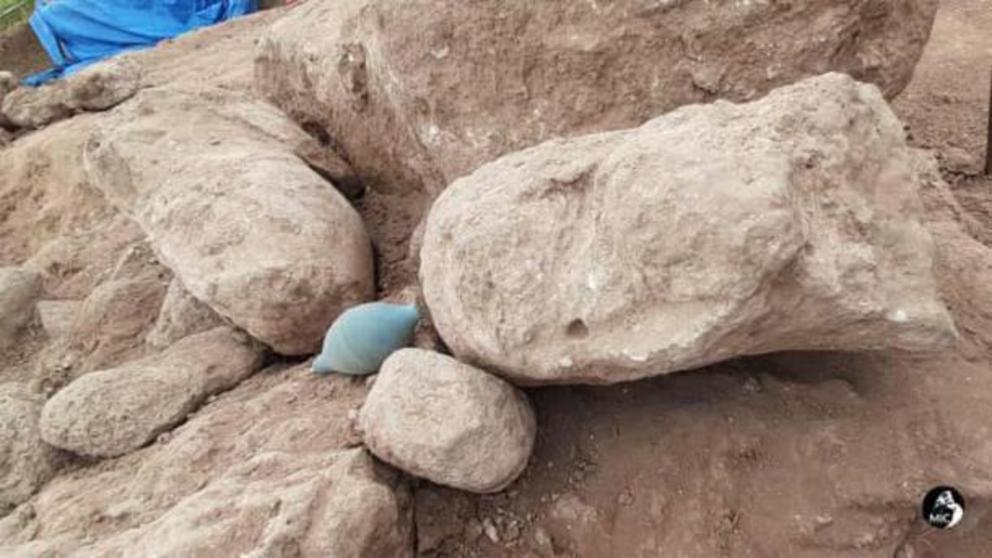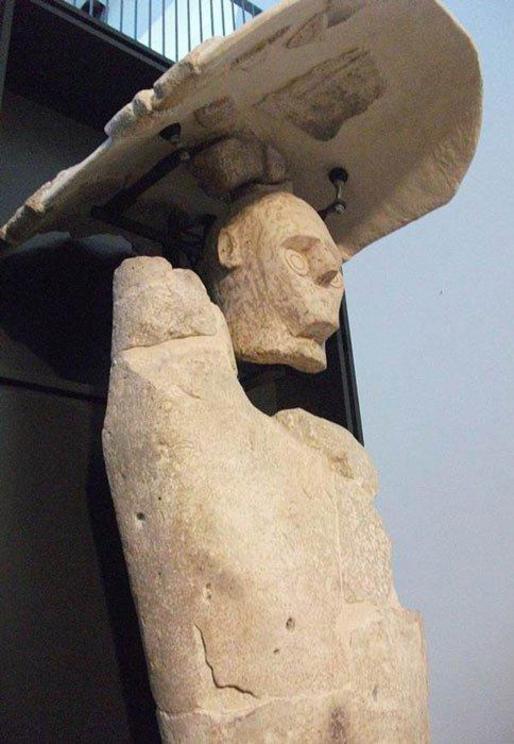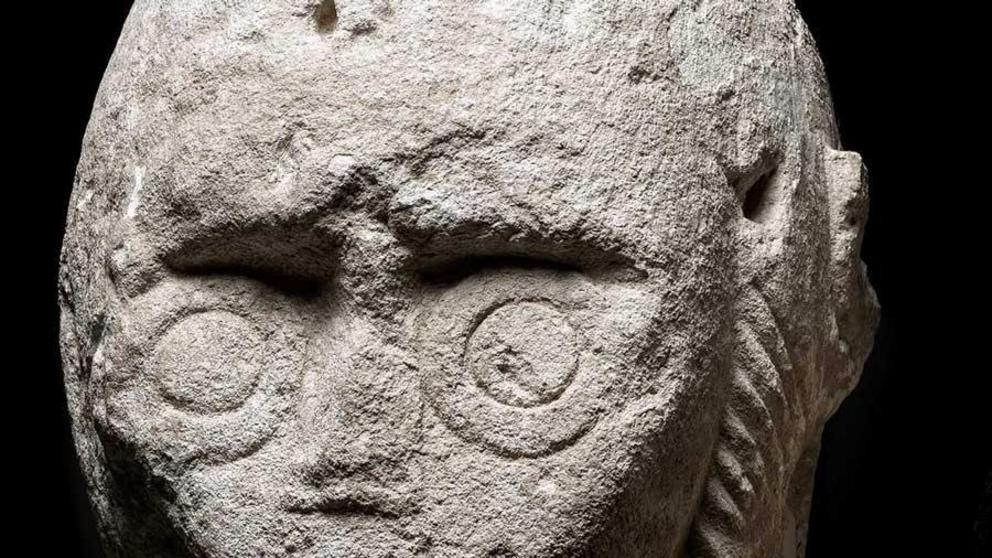Two more disc-eyed giants of Mont’e Prama found in Sardinia!
Top image: Two more stone giants of Mont’e Prama from the Iron Age have been unearthed in Sardinia.
Their purpose is currently unknown, but two more disc-eyed giants of Mont’e Prama have been unearthed on Sardinia. The Mont’e Prama Iron Age burial necropolis on the Italian island of Sardinia has for the last 50 years been the source of a great archaeological mystery. The site was first discovered by local farmers in March 1974 on farmland near Mont'e Prama, in the commune of Cabras, in central-western Sardinia, Italy. It was here that the so-called “Giants of Mont'e Prama” were discovered. This collection of ancient stone giant sculptures, with large disc-eyes, are also known as “boxer statues.”
 The head of one of the newly found boxers is here on the right, with a visible chin and thick broken neck.
The head of one of the newly found boxers is here on the right, with a visible chin and thick broken neck.
While it is understood that the giants of Mont’e Prama were created by people by the Nuragic culture of ancient Sardinia, the purpose of these gargantuan monuments is currently unknown. However, on Saturday afternoon, Italy’s Ministry of Culture announced that “two more giant naked torsos” had been identified by researchers at Mont’e Prama. In this instance, the two giants were covered with a large shield which has allowed the researchers to date them precisely to between 950 to 730 BC.
Emerging in the Early Bronze Age, Nuragic civilization derives its name from Sardinia’s “ nuraghe,” which are stone fortresses with high towers. Most of these structures were raised around 1800 BC and today no less than 7,000 nuraghes are peppered across the ancient Sardinian landscape. It was from these stone forts that the Nuragic people defended their rule over Sardinia until the 2nd century AD.
 This Nuragic civilization nuraghe stone fortress on Sardinia was built by the same people who made the mysterious giants of Mont’e Prama.
This Nuragic civilization nuraghe stone fortress on Sardinia was built by the same people who made the mysterious giants of Mont’e Prama.
Many of you will already have noticed that the Sardinian nuraghe resembles, and perhaps functioned similarly to, the 2nd century Pictish brochs of northern Scotland. Day to day these stone towers housed community chiefs and their families, and they became community shelters for people and animals while under attack from rivalling tribes and foreign invaders.
Italy’s Cultural Minister, Dario Franceschini, said the two giant stone torsos are officially called “Cavalupo-type boxers,” which means they are either warriors, archers or boxers with shields and armed gloves. The culture ministry’s superintendent for southern Sardinia, Monica Stochino, said the statues are made of limestone which is soft and fragile. Therefore, the site archaeologists now need more time to excavate the two huge torsos from the surrounding sediment which has set like clay.
 Some of the giants of Mont’e Prama had curved stone shields over their heads and this was also true of both of the recently discovered giants.
Some of the giants of Mont’e Prama had curved stone shields over their heads and this was also true of both of the recently discovered giants.
An article in Arkeonews explains that since the site’s discovery in 1974 “thousands of fragments” of giant human figures have been recovered at Mont’e Prama. While their original purpose remains veiled in mystery, so far, archaeologists have reassembled about 40 statues and while no one is complete each measures over 2 meters (6.56 feet) tall. Furthermore, they all represent warriors, archers, or nuraghe boxers.
Giant Warriors, Archers, and Boxers
Archaeologists believe the giant’s disc-shaped eyes and eastern-style garments probably depicted Nuragic cultural mythological heroes who were buried to symbolically guard the sepulchral site . However, other archaeologists consider the statues as representing deities from the Nuragic pantheon. However, these two interpretations are relatively limited and don’t consider inspiration from the land of the living first.
Polynesian Easter Island , formerly known as Rapa Nui , is famed for its monumental giant statues called moai which were created during the 13th-16th centuries. According to writer Jo Anne Van Tilburg these carved human figures with oversize heads are believed to be “the living faces (aringa ora ) of deified ancestors ( aringa ora ata tepuna )”. Perhaps the giants of Mont’e Prama, Sardinia also reflect the bodies and faces of the ancestors who taught them how to survive on an ocean locked island?
We will never know for sure what the large-eyed giants represented, but as long as archaeologists continue to excavate at Mont’e Prama in Sardinia it is only a matter of time before more statues will surface, adding to the emerging army of giants.

